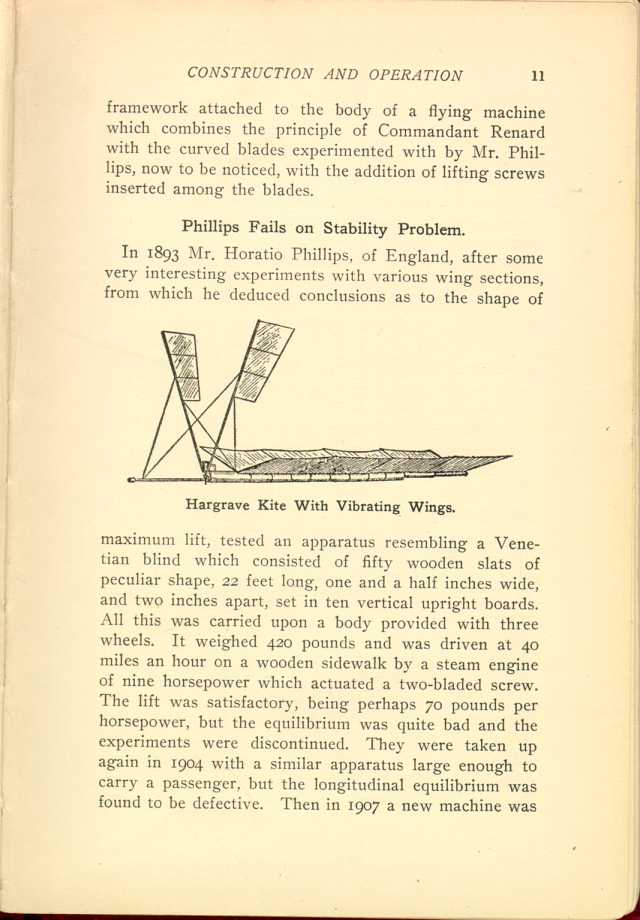Phillips Fails on Stability Problem.
In 1893 Mr. Horatio Phillips, of England, after some very interesting
experiments with various wing sections, from which he deduced
conclusions as to the shape of
maximum lift, tested an apparatus resembling a Venetian blind which
consisted of fifty wooden slats of peculiar shape, 22 feet long, one and
a half inches wide, and two inches apart, set in ten vertical upright
boards. All this was carried upon a body provided with three wheels. It
weighed 420 pounds and was driven at 40 miles an hour on a wooden
sidewalk by a steam engine of nine horsepower which actuated a
two-bladed screw. The lift was satisfactory, being perhaps 70 pounds
per horsepower, but the equilibrium was quite bad and the experiments
were discontinued. They were taken up again in 1904 with a similar
apparatus large enough to carry a passenger, but the longitudinal
equilibrium was found to be defective. Then in 1907 a new machine was
tested, in which four sets of frames, carrying similar sets of slat
"sustainers" were inserted, and with this arrangement the longitudinal
stability was found to be very satisfactory. The whole apparatus, with
the operator, weighed 650 pounds. It flew about 200 yards when driven by
a motor of 20 to 22 h.p. at 30 miles an hour, thus exhibiting a lift of
about 32 pounds per h.p., while it will be remembered that the aeroplane
of Wright Brothers exhibits a lifting capacity of 50 pounds to the h.p.
